BMW made a bold move by choosing to take a new direction for the GS range. Will the R 1300 GS carry forward the legacy or will it pave its own way?

Story: Joshua Varghese
Photography: BMW Motorrad India
The BMW GS range of motorcycles are known worldwide for their ability to go round the globe, a feat that was immortalised by Ewan McGregor’s documentary, Long Way Round. Years have flown by since then and the GS has had key transformations along the way but the latest iteration of this iconic motorcycle may be its most significant overhaul yet. To go away from a formula that is considered gospel, develop something entirely new, and expect it to uphold a legacy that spans over four decades is a brave move indeed. We found ourselves in Leh to experience this revolution first-hand.
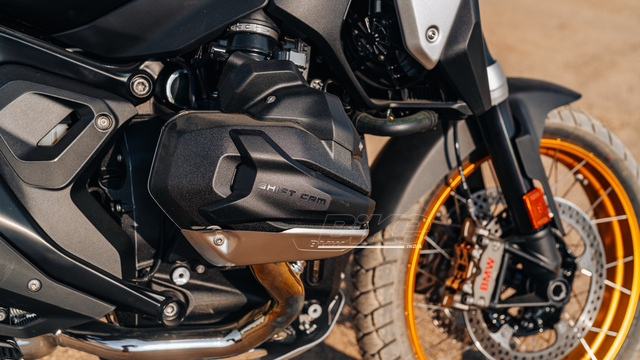
The R 1300 GS is powered by an all-new engine. It is a 1,300-cc, eight-valve, liquid-cooled unit that develops 145 hp at 7,750 revolutions per minute (rpm) and a peak torque of 149 Nm at 6,500 rpm. That is nine hp and six Nm more than the R 1250 GS, which makes it the most powerful BMW boxer in series production. It is also worth noting that it has a compression ratio of 13.3:1, which is among the highest in the BMW Motorrad line-up. As before, the intake valves’ camshafts continue to use two cams to switch between low- and high-load demands, which is one of the reasons why this engine continues to deliver power smoothly across the rev-range. It is a refined unit that develops and delivers torque easily. It would not be far from the truth to describe the power delivery as “creamy”. That is where the similarity ends, though.
Surprised? So was I when my right foot did not touch the cylinder any more. It is the most symmetrical boxer layout we have seen in a GS and that frees up a lot of room for the feet on both sides. BMW engineers reduced the stroke by three millimetres and increased the bore by four mm to compensate for it. They have also allowed the engine to breathe better by increasing the sizes of the intake and exhaust valves. With a 9,000-rpm red-line and a character to match, it would not be inappropriate to say that this is the most sport bike-like engine a GS has had. It is a machine that is eager to rev and the best part is that one does not have to rev it all the way to make the most of its abilities.
BMW’s torque graph indicates that there is as much as 110 Nm available as early as 2,500 rpm which lets this globe-trotter gain momentum quickly without losing any steam all the way to about 8,000 rpm. While it is difficult to arrive at the root of such flexibility, it is easy to say that the whole package works flawlessly to offer the rider a variety of choices, including comfortable cruising, stitching together fast corners or even venturing off the road without hesitation.
BMW offer four riding modes as standard and each of them is distinct in the way it responds. Furthermore, there is something here for everyone, including fuel efficiency, cruising comfort, and off-road thrills; all of which are offered with a safety net that makes this motorcycle incredibly easy to ride, even for beginners. Is it too easy? Only if one wants it to be.
Optional riding modes include Dynamic Pro and Enduro Pro which essentially ask the electronics to ease off and allow the rider greater control over the proceedings. Intimidating as that may sound, it must be said that the R 1300 GS is among those motorcycles that allow the rider to explore its limits even when the electronics are at their most lenient.
If you asked me what I liked best about the new GS, I would say weight balance. The last time a GS lost some weight was when it made the transition from the 1150 to the 1200. Since then, it has been growing in volume and heft. The 1300 is the slimmest GS in a long time and it has also lost a total of 12 kilograms as compared to its predecessor. More than half that weight was reduced at the engine. The six-speed transmission now sits below the engine instead of behind it. This has reduced the overall length of the engine.
The frame of this GS is also a big departure from traditional fare. The main shell frame is made of steel while the subframe is a cast aluminium unit which keeps the weight low at the rear while retaining stiffness. They have rounded that off with a revised form of the telelever suspension. The front fork is now rigidly mounted to the triple clamp like the HP2 Sport’s which eliminates the tilting movement one used to experience previously at the handlebar of the GS; under hard braking, for example. In the 1300, the only force that is transmitted through the handlebar is the steering input and there is almost no discernible tilt movement. At the rear, BMW’s paralever set-up now benefits from a longer swing-arm.

The motorcycle that rolled along contentedly below 50 km/h in sixth gear along Leh’s sleepy roads turned into a different animal altogether when we reached a quiet stretch of twisties. Shifting through the six-speed transmission was addictive thanks to the slick quick-shifter and so was the soundtrack that emanated from the two-into-one exhaust as the revs climbed. I have fond memories of the R 1250 GS because of the way it took me by surprise. For a motorcycle of that size, it moved gracefully. So, believe me when I say that the R 1300 GS is a few rungs above.
It tipped into corners so quickly that at times it was hard to believe I was riding the GS flagship. Perched comfortably in the rider’s seat with the electrically adjustable windscreen taking the full blast of the cold wind, I was able to use the leverage offered by the wide handlebars and lean the motorcycle into corners with confidence. The fun part was that it complied with no reluctance whatsoever. This is easily the best-handling big GS in my books. With no fork dive to worry about, the immense stopping power of the dual-disc set-up takes getting used to but there is enough feel at the lever to adjust the four-piston calipers’ biting force when carrying speed into a corner. With Full Integral ABS, even if one uses only one of the brake levers, the braking force is applied at both ends.
Although I have no complaints about the Michelin Anakee Adventure tyres on the road, my experience with them in the dirt was limited. Perhaps, more on that when we get the motorcycle to ride in Pune. However, from whatever little I experienced, the motorcycle showed great promise for the rough stuff.
In the suspension department, we are familiar with the electronic damping that was offered with the 1250. This motorcycle gets that and the ability to adjust preload automatically. Meaning the suspension is optimized to work in its most usable range regardless of the load the motorcycle is carrying. Furthermore, BMW allow one to program such functions into the switchgear, making it simple to change damping settings on the move. With this kind of adjustability, it is only a matter of wandering into a few menus and pressing a few buttons to get the set-up one wants. There is adequate travel at either wheel and the GS is as comfortable soaking up bumps on a bad road as it is ripping through the bends.
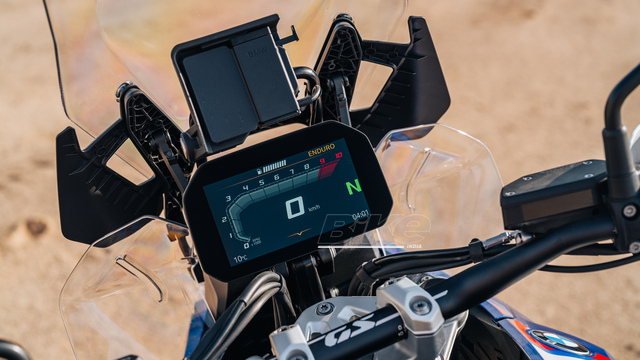
The R 1300 GS is a milestone for BMW not just because it is an excellent motorcycle but also because BMW have elected to go the right way, which, in this case, was in the reverse. Instead of going for a bigger and more sophisticated motorcycle to replace the R 1250 GS, they have simplified as many things as they could while making the motorcycle more compact and as lightweight as possible.
The styling will prove my point further. Other than the boxer engine, telelever suspension, 17- and 19-inch wheels, and shaft final drive, how many other things stand out when you place it alongside its predecessor? From the styling of its headlights to the shape and volume of its bodywork, a lot has been changed for the R 1300 GS. Hardcore GS fans may look upon this as blasphemy but it is a functional design. Plus, it may also interest some people to know that BMW are offering an optional headlight that is capable of illuminating a corner as the motorcycle banks into it.
Other than the absence of a lot of bodywork in front of the rider, the riding position is largely familiar and offers GS level of comfort over long distances. Furthermore, safety is paramount for this brand and they are offering multiple features with the R 1300 GS. My favourites include hill-start assist and full integral ABS as standard. Optional equipment include additional riding modes, automatic ride height adjustment, and radar-based safety systems.

The simplest way to describe this motorcycle would be to say that it does everything its predecessor did but does it better. In fact, the handling is so good that it has unlocked a sporty side that most may not associate with a GS. It is priced at Rs 20.95 lakh which is Rs 40,000 more than the outgoing model. BMW have taken a globe-trotter and made it faster, sharper, and more capable than ever before. It certainly is a milestone moment in the GS lineage.
Watch the full review here:
Also Read: Ducati Multistrada V4 Rally Review



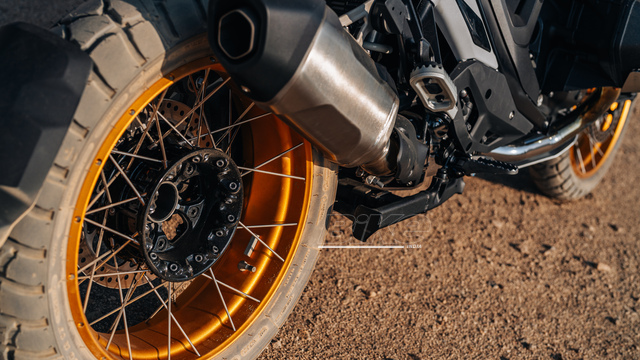


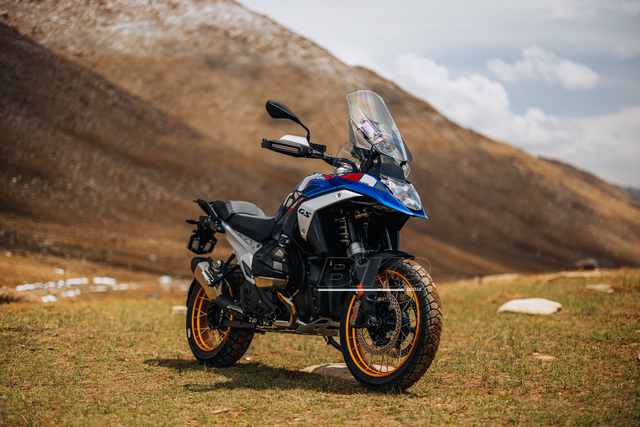
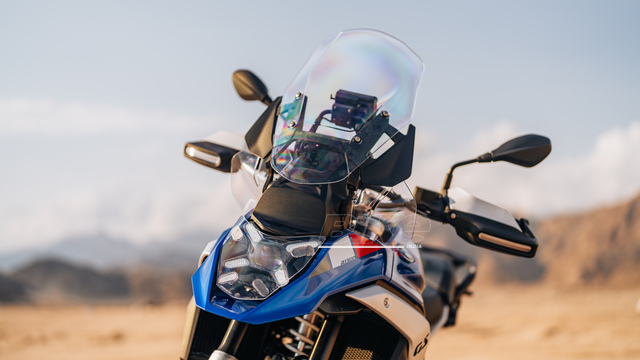


Leave a Reply